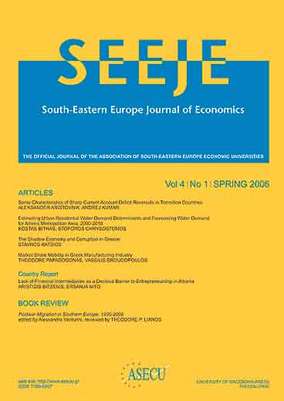A discussion on competitive groups of countries within the European area of integration
Part of : SEEJE ; Vol.5, No.2, 2007, pages 185-202
Issue:
Pages:
185-202
Author:
Abstract:
This paper seeks to provide a representation of European economic integration that would discriminate between the random effect of regional clustering by geographical vicinity (as the conventional area definitions suggest) and the hypothesized effect of competitive developments underpinned by homogeneous areas of integration. The investigation is based on a simple but comprehensive statistical analysis of the competitive position of thirty-three European countries, for which data were collected targeting five determinants of competitive similarity and twenty-seven corresponding indicators. The results confirm the fact that countries tend to cluster into larger groups the more general their denominator is, say, political legacy, historical circumstances or shared ideology. At the same time, a set of group behavioral patterns suggests that a better understanding of regional effects of integration strongly relates to a similarly better representation of regional groupings based on comparable competitive evolutions.
Subject (LC):
Keywords:
competitive area, economic similarity, European regions, economic integration
Notes:
Περιέχει σημειώσεις, πίνακες, διαγράμματα και βιβλιογραφία, The author acknowledges the financial support received under the research grant CNCSIS no. 1131/2005-2006 of the Ministry of Education and Research of Romania. He thanks Ms. Irina Ramniceanu, Ms. Roxana Voicu-Dorobantu, and Ms. Alina Draghici - all from the Academy of Economic Studies in Bucharest - for their valuable research assistance and Ms. Dana Gardu for editorial assistance. All errors and misapprehensions remain the author’s responsibility., JEL Classification: F15, O57, R11




